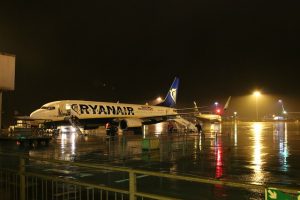 Navigation lights are an important part of an airplane. At any given time, there are around 10,000 airplanes in the skies transporting a total of over 1 million passengers. To protect against nighttime collisions, as well as other serious accidents in poor visibility conditions, airplanes are equipped with navigation lights.
Navigation lights are an important part of an airplane. At any given time, there are around 10,000 airplanes in the skies transporting a total of over 1 million passengers. To protect against nighttime collisions, as well as other serious accidents in poor visibility conditions, airplanes are equipped with navigation lights.
What Are Navigation Lights?
Also known as running position lights, navigation lights are those used for navigation purposes. They’ve been around for centuries, with the first navigation lights appearing on ships. In 1846, lawmakers in the United Kingdom passed a law requiring all ships to have navigation lights. Navigation lights are now found on both ships and airplanes. They consist of bulbs that, when turned on, emit colored light so that ships and airplanes can safely navigate to their intended destination.
It’s important to note that navigation lights aren’t used to provide illumination for passengers or pilots. Rather, they live up to their namesake by offering navigational benefits. They help pilots navigate to their intended destination without experiencing collisions or other serious accidents. Navigation lights create colored illumination that makes airplanes easier to see. When the sun goes down, they’ll illuminate the surrounding space around the airplane with colored lights.
How Navigation Lights Work
How do navigation lights work exactly? For airplanes, navigation lights consist of two colors: red and green. Red navigation lights are found on the tip of an airplane’s left wing, whereas green navigation lights are found on the top of an airplane’s right wing. Most commercial airplanes have a single red navigation light and a single green navigation light.
All airplanes use this universal format for their respective navigation lights. In doing so, air traffic controllers can determine the direction in which airplanes are traveling. If an air traffic controller sees a red light on his or her right and a green light on his or her left, the air traffic controller will know that the airplane is approaching the tower. If the lights are reversed, on the other hand, the air traffic controller will know that the airplane is flying away from the tower.
Without navigation lights, air traffic controllers and other individuals on the ground wouldn’t be able to tell the direction in which airplanes are traveling. Navigation lights offer a solution. They consist of red and green lights that are installed on an airplane’s left and right wings, respectively.



